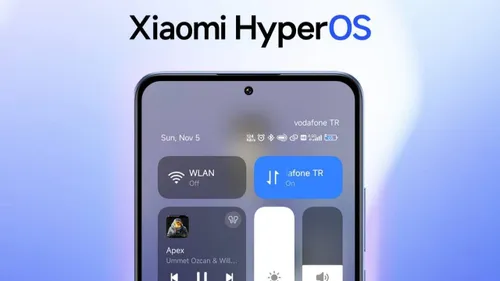What’s happening behind the scenes
HyperOS 3 is shaping up to be more than just a routine patch. It’s the company’s biggest platform update since it replaced MIUI last year. Xiaomi has already said that newer flagships will move to Android 16 later on, but for a large number of phones, Android 15 is the next (and final) stop.
Internal builds like these usually mean that a public beta isn’t too far away. Xiaomi’s engineers tend to lock in final builds by the end of Q4, followed by a staged rollout early next spring — the same pattern we’ve seen before.
The first devices in testing
Based on what’s surfaced from Xiaomi’s internal servers, here’s what seems to be in the first batch of testing:
- Redmi Note 13 5G / Note 13R Pro / POCO X6 Neo
(China OS3.0.0.4.VNQCNXM | Global OS3.0.0.2.VNQMIXM | EEA OS3.0.0.2.VNQEUXM) - POCO F5 Pro / Redmi K60
(China OS3.0.0.4.VMNCNXM | Global OS3.0.0.1.VMNMIXM) - Xiaomi 13 Lite / Civi 2
(EEA OS3.0.0.1.VLLEUXM) - Xiaomi 12T Pro / Redmi K50 Ultra
(China OS3.0.0.1.VLFCNXM) - Xiaomi 12 Pro / 12 / 12S Ultra
(Various CN builds) - Redmi K60 Pro, Note 12T Pro, MIX Fold 2, Xiaomi Pad 6 Pro, and Civi 3
Right now, the Redmi Note 13 5G seems to be leading the testing cycle globally. If everything goes according to plan, it might end up being the first phone outside China to get the Android 15-based HyperOS 3 build.

Missing names raise questions
Not every popular model is on the list. Phones like the Xiaomi 12S, 12S Pro, POCO F5, POCO M6 Pro, Redmi Note 12 Turbo, and Xiaomi 12T haven’t shown up in test data yet. That could mean a few things — maybe testing hasn’t reached them, or maybe Xiaomi doesn’t plan to push Android 15 to those units at all.
Given the company’s two-Android-update policy for most mid-range models, it wouldn’t be surprising if some of these stop here.

What HyperOS 3 brings to the table
While Xiaomi hasn’t detailed every feature yet, Android 15 itself brings upgrades in efficiency, privacy, and app behavior. HyperOS 3 layers on a refreshed design — cleaner icons, smoother motion, and better coordination between devices.
In real-world use, users should notice snappier performance, slightly better battery endurance, and tighter syncing between phones, tablets, and smart gadgets. That said, Xiaomi has hinted that this might be the final stop for certain models — no Android 16, no HyperOS 3.1.
Why this matters
For Xiaomi, the rollout isn’t just about delivering Android 15. It’s about proving it can manage a consistent update path across its sprawling ecosystem. Historically, that’s been a weak point. Now the company seems more organized — at least judging by the uniform build numbers and steady test cycle.
If things stay on track, the first OTA releases could start appearing by spring 2026. For users still hanging on to mid-range devices, getting Android 15 at all is something worth noting — a quiet win before the next big leap.
Key Takeaways
- Xiaomi is internally testing HyperOS 3 (Android 15) on 12 models across Xiaomi, Redmi, and POCO lines.
- Redmi Note 13 5G likely leads the global rollout.
- Some popular devices, like POCO F5 and Xiaomi 12S, haven’t entered testing yet.
- Android 15 brings smoother UI, better power efficiency, and tighter privacy controls.
- For several older phones, HyperOS 3 will be the final major software update.
